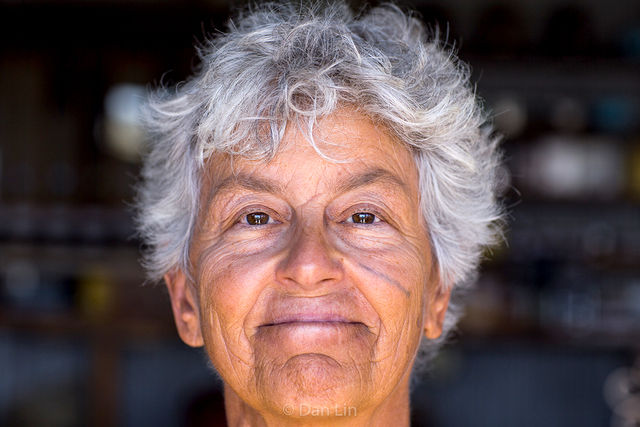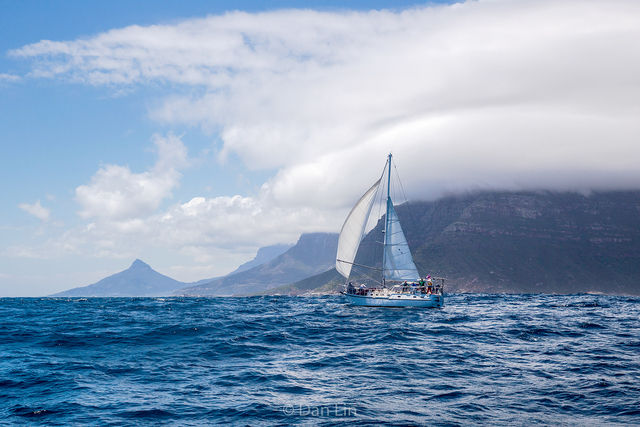Two oceans or one?
Editor’s note: Anahola resident Mimi George is a sailor and anthropologist specializing in the study of traditional navigation. She has been serving on the crew of the Hokulea’s escort boat Gershon II on the South African leg of the canoe’s circumnigaiton. This is her most recent account.
The aim of the Malama Honua Worldwide Voyage is to sail a thread of connection round the world and share stories of hope that will help us all Malama Honua — care for each other and our planet.
According to Hokulea crewman, Kaimana Barcarse, the Hawaiian concept of moana is singular — there is one ocean and it is our mother all around the world. But in written history, the Cape of Agulhas and the Cape of Good Hope are where the Indian Ocean and the Atlantic Ocean meet, with often violent results. Hokulea was not built for the giant winds and waves of this coastline. I joined the crew of the escort vessel, Gershon II, to help “Hoku” get around safely.
At daybreak a National Sea-Rescue Institute (NSRI) vessel towed Hokulea out the harbor at Mossel Bay. We were so grateful for the help of this all-volunteer crew in maneuvering engineless Hokulea in and out of South African ports. This helped us Gershon II crew to do our job of helping Hokulea to avoid storms along the dangerous South African Coast. The crews of all three vessels were one ohana (family) supporting the message she carries.
As we rounded Cape Agulhas at 11 a.m., the big low pressure we were trying to dodge slowed in its approach to western South Africa. We searched close to shore, then moved miles to seaward, until we knew we found the Agulhas current by a 2 knot increase in our speed. After sunrise we dropped the towline. Hokulea wore her tanbark colored sails and she soon sailed past us toward Simon’s Town. We were thrilled to see her sailing free. Congregations of fur seals and whales seemed to celebrate all around us.
At Simon’s Town the NSRI crew expertly guided engineless Hokulea alongside a floating dock. As Gershon II approached the yacht basin we were greeted by a Jackass Penguin who swam close alongside our hull and looked in our eyes, cocking its head in the most engaging way. We mentioned this on the radio with NSRI and they noted “Yes, the penguins are quite well-trained here.”
Later we learned that this creature had next approached the NSRI inflatable, and on seeing it the crew recognized that it was in serious trouble — hyperbuoyant, dehydrated and cold, probably as a result of having been “oiled” by a chronic leak from a military ship. It had been begging us for help! The NSRI crew swaddled the penguin to warm it, and turned it over to the nearby penguin rescue facility for treatment.
Along the tourist-safe promenade of Simon’s Town we watched small submarines depart the naval base, and wandered the craft vendor booths, old stone Dutch-style restaurants and shops on shore. Naval cadets jogged the streets, and did laps in a large outdoor swimming pool. We guessed it was a warm seawater pool since it was completely blanketed by seagulls after the cadets left at 6 p.m.
Some Afrikaners in Simon’s Town told us that they resisted complying with the 1950 Areas Act, which required non-whites to vacate areas that the government wanted to be for whites only. But eventually over 60 percent of the non-white residents of Simon’s Town were forced to leave with only the clothes on their backs. In other areas it was 100 percent … and today the “townships” are still 100 percent non-white and most homes are tin or cardboard.
The next day the “Doc” (Carolyn Annerud, the medical officer on Hokulea) and I walked to the penguin reserve on a beach just out of Simon’s Town. Hundreds of them were all around the visitors walkway, and they took turns making the “jackass” braying sound that they were named for. We also saw some Dassi (Petromus typicus) walking on the rocks surrounded by native plantations in the reserve. “What is that?” we asked each other. A Japanese visitor next to us declared “It’s a Lacoon!” Doc was dubious: “With no striped tail?” To me it looked like triple-size, rounded rat.
We finally rounded Cape of Good Hope, the southerly breeze strengthened and we had a lift from the cold Benguela current. Hokulea raised her sails, including the large spinnaker. Soon after, seven humpback whales surrounded Gershon II, and dozens of fur seals played among them and above them. They appeared to be creating a lot of bubbles — perhaps surrounding schools of fish feeding on the dense concentrations of krill that result from the upwelling of plankton between the currents. The seals and whales made great moans and cries as they dove and swooped through the bubbly areas.
Another NSRI vessel helped push Hokulea to the dock in Capetown Harbor as a school band from a township played. Speeches and performances by an Xhosa tribal drum and dance group followed. Then Kamehameha Schools and Punahou students performed oli and hula about great Pacific voyagers and voyages. Parts of the celebration can be seen on Hokulea.com.
Days later, at the Desmond and Leah Tutu Foundation, we met the “Rabble-Rouser for Peace” at more length. We glimpsed the gentle balance of Archbishop Emeritus (ABE) Tutu and the staff members who devote themselves to peaceful actions to improve the lives of children and care for our planet. Desmond Tutu would not be quiet about injustice and suffering under apartheid, and he still speaks against wrongdoing while holding everyone to a high standard of peaceful actions when needed. He had worked hard to bring a peaceful end to apartheid and to bring democratic elections to South Africa.
Nainoa spoke to ABE Tutu of the “starlight” created by his navigation of a path promoting a peaceful end apartheid in South Africa. Nainoa noted that the pointer stars of the Southern Cross are used by Hokulea navigators, and in South Africa they appear to us upside down, perhaps signaling that we are on the opposite end of our planet from Hawaii. He eventually asked Tutu if he would permit PVS to name one of these stars for him. Tutu stood up and said, “I don’t think I am the right one to give such a permission,” and started laughing. The laughter spread as we understood that part of what he was saying was that there was a greater authority who should be asked: i.e., the maker of stars.
Perhaps the most educational experience for our crews was a tour of Robbens Island, the World Heritage Site, located 5 kilometers out of Capetown Harbor.
This is where Nelson Mandela spent at least 27 of the 33 years in maximum security block of the prison, for leading the anti-apartheid movement. Robben Island was a prison for hundreds of years. One of the two who ever escaped the prison was the Muslim prophet Autshamato, who swam to the mainland in 1634.
Over a thousand people were detained there for having leprosy (shades of Kalaupapa), a disease that we now know is very difficult to transmit, and only 3 percent of people even have the genetic makeup that could allow them to catch it.
Many detainees and convicts died at Robbens Island, from the horrible conditions and/or from torture by their captors. So now the island is dedicated to the “transcendence of the spirit” that Nelson Mandela and many others demonstrated there. The former prisoners now educate visitors as to what happened there.
Our tour guide was “hard core.” He started the tour saying, “If you are not asking questions, you are going to be locked in one of the cells.” He was locked in the Maximum Security Block B for 4 years of a 14-year sentence, when the de Klerck government freed Mandela and hundreds of other political prisoners as part of agreement with the ANC in 1993. One journalist in the Hokulea crew asked him what he had been arrested for. “Terrorism,” was his terse reply. The journalist asked for more details. Our guide stared back at him. Then he said, “If I tell you, then if I want to go to the USA sometime, I will not be allowed in!”
Perhaps the story of our humanity is like the story of one ocean. Various streams and currents that swirl, and often clash, as they round the south of Africa. But the result is a great upwelling of life. Today the meeting of cultures in this rainbow nation is still rewarding for those who sail in there with open hearts and commitment to the peaceful path of Malama Honua.




